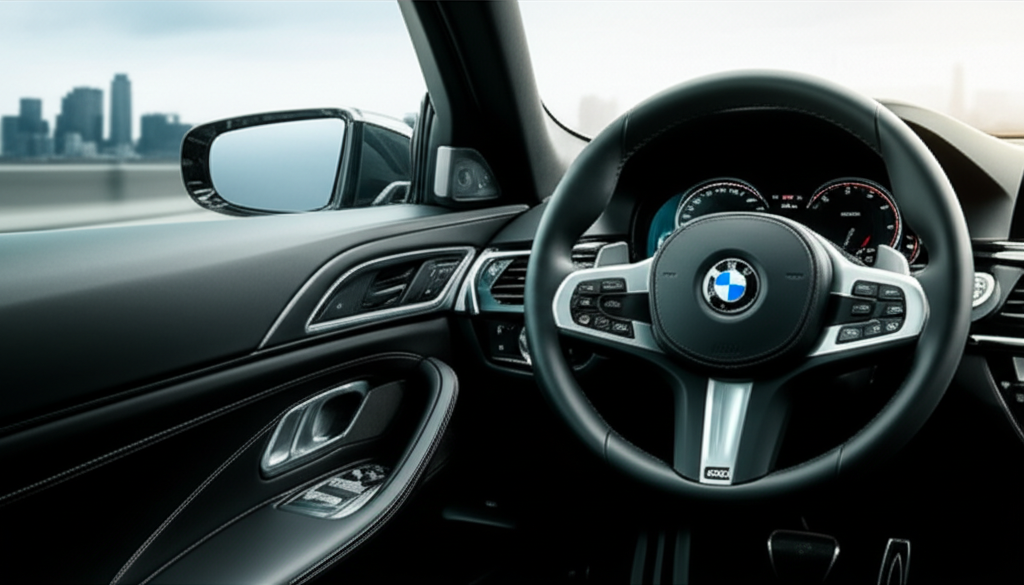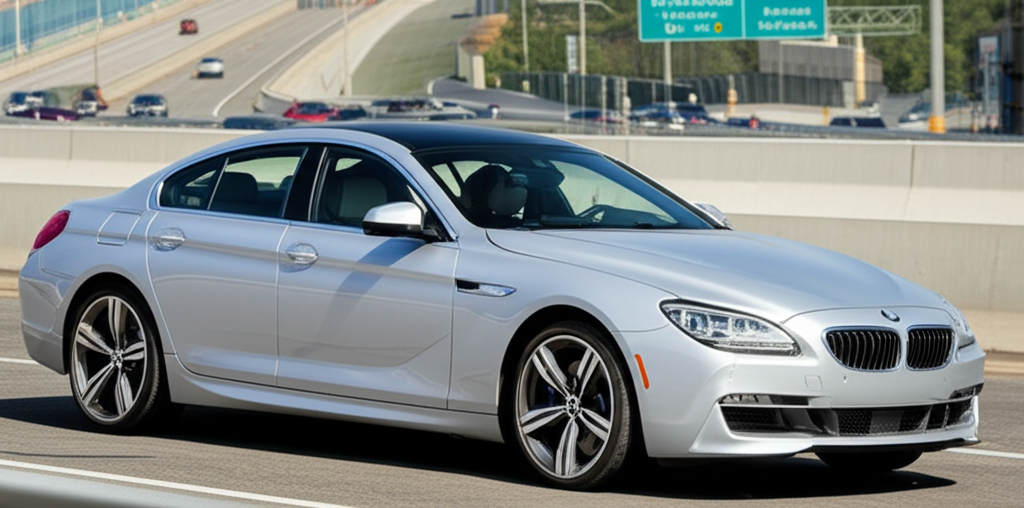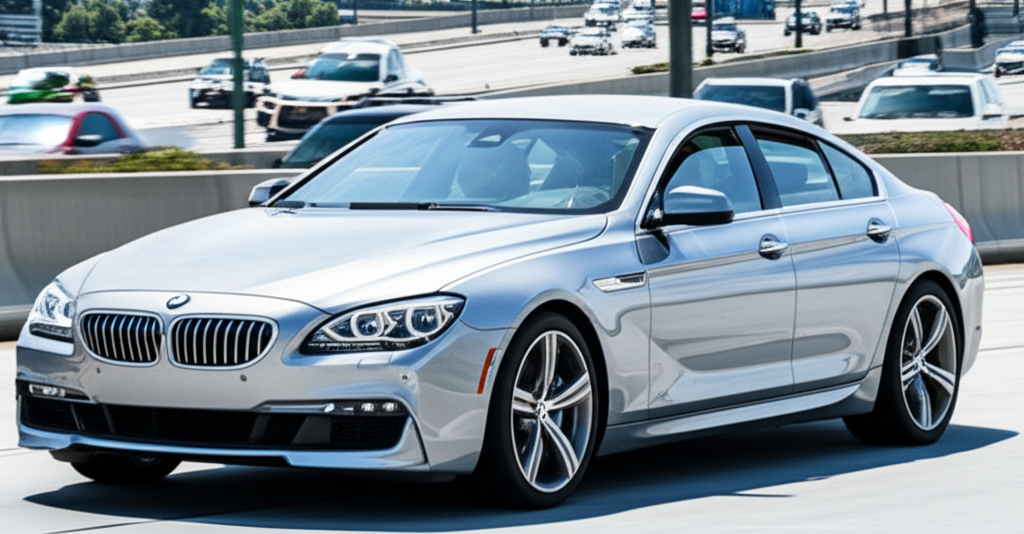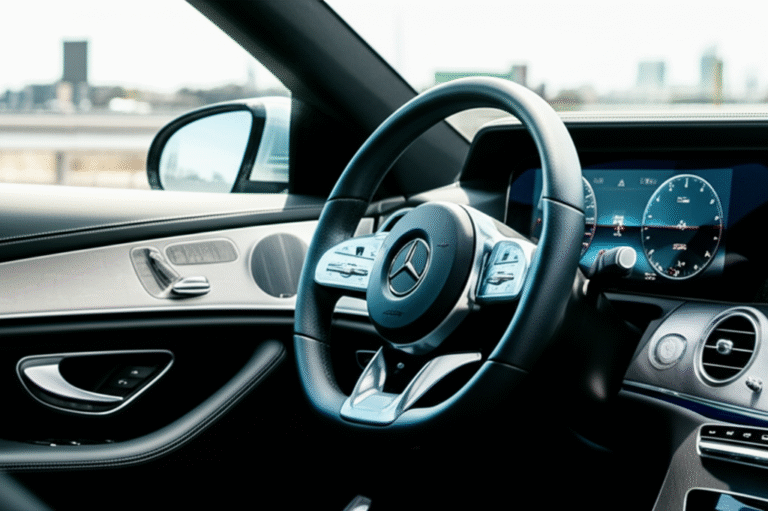BMW 6 Series Ground Clearance: 5 Facts revealed

BMW 6 Series Ground Clearance: 5 Surprising Facts Today
Your BMW 6 Series is a marvel of engineering, but understanding its ground clearance is crucial for safe driving, especially in the USA. We’ll reveal 5 essential facts about BMW 6 Series ground clearance, making it simple to navigate any road.
In This Article
- 1 Understanding Vehicle Ground Clearance
- 2 BMW 6 Series Ground Clearance: A Closer Look
- 3 5 Facts Revealed About BMW 6 Series Ground Clearance
- 4 Factors Influencing BMW 6 Series Ground Clearance
- 5 Table: Comparative Ground Clearance Examples
- 6 Navigating Common Obstacles with Your 6 Series
- 7 FAQ: Your BMW 6 Series Ground Clearance Questions Answered
- 7.1 Q1: How do I find the exact ground clearance for my specific BMW 6 Series model?
- 7.2 Q2: Can I increase the ground clearance of my BMW 6 Series?
- 7.3 Q3: What happens if I scrape the bottom of my BMW 6 Series?
- 7.4 Q4: Does the M Sport package on a BMW 6 Series lower its ground clearance?
- 7.5 Q5: Is the BMW 6 Series suitable for driving on unpaved roads or gravel?
- 7.6 Q6: How does BMW’s suspension technology affect ground clearance?
- 7.7 Q7: Can I drive my 6 Series through puddles or minor floodwaters?
- 8 Conclusion
Key Takeaways
- Discover BMW 6 Series ground clearance variations.
- Learn how ground clearance affects driving.
- Find out if your 6 Series is suitable for rough roads.
- Understand common driving challenges related to clearance.
- Get tips for protecting your BMW 6 Series.
When you think of a BMW, you likely picture sleek lines, powerful performance, and luxurious comfort. The BMW 6 Series embodies these qualities, offering a sophisticated driving experience. However, a key aspect of any vehicle, especially one designed for dynamic driving, is its ground clearance. This measurement dictates how high the lowest point of your car sits off the road. For drivers in the USA, understanding your BMW 6 Series ground clearance is not just about aesthetics; it’s vital for avoiding costly damage and ensuring a smooth ride. Many owners wonder if their elegant coupe or convertible is equipped to handle the varied road conditions they might encounter, from city streets to less-than-perfect rural routes. Navigating speed bumps, potholes, and even steep driveways can become a source of anxiety if you’re unsure about your car’s capabilities. This guide will demystify the BMW 6 Series ground clearance, providing you with five essential facts to help you drive with greater confidence. Let’s explore what you need to know to keep your 6 Series in pristine condition and enjoy its performance to the fullest.
Understanding Vehicle Ground Clearance
Ground clearance, also known as ride height, is the shortest distance between the lowest point of a vehicle’s chassis and the ground. Think of it as the protective buffer between your car’s underbody and everything it might encounter on the road. This measurement is critical because it directly impacts your vehicle’s ability to traverse uneven terrain, speed bumps, curbs, and other obstacles without scraping or causing damage. For luxury vehicles like the BMW 6 Series, which often feature sporty designs and lower profiles, ground clearance is a carefully considered engineering element that balances performance with practicality.
The lowest point on a car is typically not the floor pan but rather components like the exhaust system, suspension parts, or aerodynamic body kits. Manufacturers design these vehicles with a specific ground clearance in mind, aiming to optimize aerodynamics and handling for their intended use. A lower ground clearance generally leads to a lower center of gravity, which enhances stability and cornering ability, making the car feel more planted to the road. However, this comes at the expense of being more susceptible to damage from road imperfections. Understanding this trade-off is the first step in appreciating why a car’s ground clearance matters.
BMW 6 Series Ground Clearance: A Closer Look

The BMW 6 Series has been produced across several generations, and its ground clearance can vary slightly depending on the specific model, year, and any optional packages installed. Generally, the BMW 6 Series is designed as a grand tourer, prioritizing on-road performance and style over off-road capability. This means its ground clearance is typically lower than that of an SUV or a vehicle designed for rougher terrain. Owners often inquire about this because they want to ensure their car can handle everyday driving scenarios without incident.
The exact figures can be elusive, as BMW doesn’t always prominently display this specification in standard brochures, focusing more on performance metrics. However, based on owner reports and automotive specifications, the ground clearance for most standard BMW 6 Series models hovers in a particular range. This specific range is a key consideration for anyone living in areas with challenging road conditions or frequently encountering obstacles like steep driveways or poorly maintained roads.
5 Facts Revealed About BMW 6 Series Ground Clearance
Fact 1: Typical Ground Clearance Range
Most standard BMW 6 Series models, across various generations (like the E63/E64, F12/F13, and G32/G15/G16), tend to have a ground clearance in the range of approximately 4.5 to 5.5 inches (about 115 to 140 mm). This measurement is typical for performance-oriented luxury coupes and convertibles designed for smooth paved roads. For context, many SUVs have ground clearance exceeding 8 inches (over 200 mm), highlighting the difference in intended use. This lower stance contributes to the 6 Series’ sporty handling and aerodynamic efficiency, but it also means drivers need to be more mindful of obstacles.
It’s important to note that this is an approximate range. Specific models, like those equipped with M Sport packages, might have slightly lower clearance due to more aggressive styling and suspension tuning. Conversely, if a vehicle has substantial aftermarket modifications, especially to the suspension, its ground clearance could be significantly altered.
Fact 2: Impact of Model and Year
The ground clearance of a BMW 6 Series isn’t a static number across all versions. Different generations and even specific trims within a generation can have slight variations. For instance, the earlier E63/E64 generation might differ slightly from the more modern F12/F13 or G15/G16 generations. This is due to evolving design philosophies, advancements in suspension technology, and changes in regulatory requirements over the years. BMW’s engineers continuously refine vehicle dynamics, and ground clearance is a part of that intricate balance.
When researching, it’s crucial to look at the specifications for your exact model year and trim. Online automotive databases and owner forums can be valuable resources for pinpointing these details. For example, a 650i might have a different clearance than a 640i due to variations in suspension components or weight distribution. Understanding these nuances helps you manage expectations and drive more cautiously if your specific model is on the lower end of the spectrum.
Fact 3: Effect on Driving Experience
The ground clearance of your BMW 6 Series directly influences how it drives. A lower ground clearance provides a lower center of gravity, which is a significant advantage for performance driving. This allows the car to handle corners with less body roll, giving you a more connected and stable feel to the road. It contributes to the sporty, agile character that BMW is renowned for. When you’re on a winding road, the reduced height helps the car feel more dynamic and responsive.
However, this sporty advantage becomes a practical challenge on less-than-ideal roads. Drivers need to be exceptionally cautious when approaching speed bumps, driveways with steep inclines, or areas with unrepaired potholes. Scraping the underside of your vehicle can lead to damage to crucial components like the exhaust system, oil pan, or aerodynamic elements. This necessitates a more deliberate driving style, involving slowing down significantly for obstacles and carefully judging entry and exit angles.
Fact 4: Suitability for Varied U.S. Road Conditions
Given the typical ground clearance of the BMW 6 Series, it is primarily designed for well-maintained urban and highway driving. While it can handle typical city streets and interstate highways across the USA, it is generally not suited for off-road excursions or driving on unpaved surfaces. Snowy regions, areas with significant frost heaves, or locations with frequent rough terrain can pose significant challenges for a car with limited ground clearance.
If you live in an area that experiences heavy snowfall, you’ll need to be particularly mindful during winter months. Even a few inches of snow can make it difficult or impossible to navigate if the snowpack is deeper than your car’s ground clearance. Similarly, dirt roads or areas with large gravel can easily lead to scraping or damage. For drivers who frequently encounter such conditions, a vehicle with higher ground clearance might be a more practical daily driver, or they will need to be exceptionally vigilant when operating their 6 Series.
Fact 5: Maintaining and Protecting Your 6 Series’ Undercarriage
Protecting the underside of your BMW 6 Series is paramount, especially given its lower profile. Regular visual inspections can help you spot any potential issues early. This means looking for signs of scraping, dents, or leaks from components like the exhaust or oil pan. Paying attention to unusual noises when driving over bumps is also a good indicator that something might be amiss.
When parking, be mindful of curbs and consider using parking sensors or a backup camera to gauge distances accurately. For steep driveways, approaching at an angle can help keep the front and rear bumpers from scraping. If you plan on making modifications that might affect ride height, such as lowering springs or larger wheels, it’s essential to re-evaluate your car’s clearance and adjust your driving habits accordingly. For those concerned about potential damage, some owners opt for protective underbody coatings or skid plates, though these are less common on luxury coupes like the 6 Series and may affect aerodynamics or weight. Always consult with a certified BMW technician for any modifications or repair concerns.
Factors Influencing BMW 6 Series Ground Clearance

Several factors can influence the actual ground clearance of your BMW 6 Series, beyond just the model year. Understanding these variables helps you accurately assess your vehicle’s capabilities.
- Suspension Type: Standard suspension versus adaptive M suspension or air suspension (if applicable to certain models or aftermarket options) can alter ride height. Adaptive systems can sometimes raise or lower the vehicle, though for the 6 Series, the primary focus is usually on sportier settings.
- Tire Size: While most owners stick to manufacturer-recommended tire sizes, installing tires with a significantly different overall diameter can subtly increase or decrease the effective ground clearance.
- Load: A fully loaded vehicle with passengers and luggage will sit slightly lower due to the compression of the suspension springs.
- Aftermarket Modifications: Lowering springs, coilovers, or body kits are common modifications that can dramatically reduce ground clearance. Conversely, some aftermarket lift kits (though rare for a 6 Series) could increase it.
- Wear and Tear: Over time, suspension components like springs and shock absorbers can wear out, potentially causing the vehicle to sag slightly.
Table: Comparative Ground Clearance Examples
To better illustrate how BMW 6 Series ground clearance compares to other vehicle types, consider this table:
| Vehicle Type | Approximate Ground Clearance (inches) | Primary Design Purpose |
|---|---|---|
| BMW 6 Series (Standard) | 4.5 – 5.5 | Luxury Grand Tourer, Performance Driving |
| Compact Sedan (e.g., BMW 3 Series) | 4.5 – 5.5 | Commuting, City Driving |
| Luxury SUV (e.g., BMW X5) | 8.0 – 9.0 | Versatile Family Vehicle, Light Off-Roading |
| Jeep Wrangler | 9.5 – 10.5+ | Serious Off-Roading |
| Sports Car (e.g., Porsche 911) | 4.0 – 5.0 | High-Performance Driving, Track Use |
This comparison highlights that the BMW 6 Series sits in a similar ground clearance range to many sedans and sports cars, reinforcing its orientation towards paved roads and performance.
Drivers of the BMW 6 Series will likely encounter a few common obstacles where its ground clearance is tested. Being prepared can prevent damage and stress.
- Speed Bumps: Approach at a slow speed, ideally at an angle if possible, and drive over them slowly. Never speed over a speed bump.
- Steep Driveways and Inclines: Enter and exit at an angle, rather than straight on. This distributes the stress across the wheelbase and reduces the chance of the front or rear bumper scraping.
- Potholes: Avoid them whenever possible. Hitting a large pothole can damage wheels, tires, suspension components, and the undercarriage.
- Road Debris: Keep an eye out for objects on the road, from fallen branches to discarded items, which could be low enough to catch on the underside.
- Parking Stops (Wheel Chocks): Be extremely cautious. Parking too close to a parking stop can cause the front spoiler or bumper to hit it, leading to damage.
A valuable resource for understanding vehicle dynamics and potential issues is the National Highway Traffic Safety Administration (NHTSA). They provide information on vehicle safety standards and recall information, which can indirectly relate to how a vehicle’s design, including its clearance, performs under various conditions. You can explore their site at nhtsa.gov.
Pro Tips: Winter Driving and Snow
If you live in a region that experiences significant snowfall, consider equipping your BMW 6 Series with winter tires designed for better traction on snow and ice. Additionally, understand that even with winter tires, very deep snow can make travel impossible without a vehicle possessing higher ground clearance. In such conditions, it might be safer to rely on public transport, ride-sharing services, or a different vehicle altogether. If you must drive, stick to cleared main roads and avoid attempting to navigate unplowed areas.
FAQ: Your BMW 6 Series Ground Clearance Questions Answered
Q1: How do I find the exact ground clearance for my specific BMW 6 Series model?
A1: Check your owner’s manual, consult your BMW dealer, or search online automotive databases using your car’s exact model year and trim. Specifications can vary.
Q2: Can I increase the ground clearance of my BMW 6 Series?
A2: Yes, modifications like taller tires (within reason) or certain suspension components can slightly increase clearance. However, significant alterations are complex, can affect handling, and might not be advisable for a luxury vehicle’s intended performance.
Q3: What happens if I scrape the bottom of my BMW 6 Series?
A3: Minor scrapes may be cosmetic. More severe impacts can damage the oil pan, exhaust system, catalytic converter, or aerodynamic undertrays, leading to costly repairs and potential leaks or performance issues.
Q4: Does the M Sport package on a BMW 6 Series lower its ground clearance?
A4: Yes, typically the M Sport package includes sport-tuned suspension and aerodynamic enhancements that often result in a slightly lower vehicle height compared to non-M Sport models.
Q5: Is the BMW 6 Series suitable for driving on unpaved roads or gravel?
A5: While it might handle a very smooth, well-maintained gravel road slowly and carefully, it is not designed for unpaved or rough terrain. The risk of undercarriage damage is high.
Q6: How does BMW’s suspension technology affect ground clearance?
A6: Advanced suspension systems, like adaptive M suspension, primarily adjust damping and stiffness for better handling. While some systems can offer slight ride height adjustments, the focus for a 6 Series is performance on paved surfaces, not increased ground clearance.
Q7: Can I drive my 6 Series through puddles or minor floodwaters?
A7: It’s best to avoid driving through standing water, especially if you can’t gauge its depth. Water can damage electronics, intake systems, and potentially cause hydroplaning. If the water is deeper than your wheel hubs, it’s generally too deep for most sedans and coupes.
Conclusion
Understanding your BMW 6 Series ground clearance is essential for maintaining its pristine condition and enjoying a confident driving experience across the USA. We’ve revealed that while this luxury grand tourer typically boasts a ground clearance of around 4.5 to 5.5 inches, this figure can vary by model and year, and significantly impacts how it handles everyday road challenges. Its sporty design prioritizes on-road performance, making it best suited for well-maintained surfaces, and drivers should exercise caution around speed bumps, steep driveways, and uneven terrain.
By being aware of these facts, you’re better equipped to protect your investment and enjoy the sophisticated engineering of your BMW 6 Series. Regular inspections and mindful driving habits will ensure your car remains a symbol of luxury and performance for years to come. Drive smart, and enjoy the journey!






